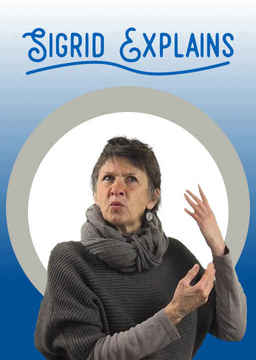









Difficulty:
 Newbie
Newbie
USA
The consonant "Q" is a special letter. We almost never find it without a "U" following it. Sigrid gives us plenty of examples of how it's used.
Difficulty:
 Newbie
Newbie
USA
Most of the time "P" is simply pronounced like a "P," but there are a few cases in which "P" is silent. Sigrid gives us plenty of examples of handy words with "P."
Difficulty:
 Newbie
Newbie
USA
The letter "O" is a tricky vowel, because there are several ways to pronounce it, both when it's single and when it's double!
Difficulty:
 Newbie
Newbie
USA
Like the letter "M," "N" is almost singable. Sigrid gives you some tips about some very important words containing the letter "N."
Difficulty:
 Newbie
Newbie
USA
Sigrid talks about some important words starting with "M" and gives us some tips about using many and much with countable and uncountable nouns.
Difficulty:
 Newbie
Newbie
USA
Sigrid talks about a different way to say "OK," which involves the letter "L." Not everyone pronounces "L" the same way, and it can be hard to understand sometimes.
Difficulty:
 Newbie
Newbie
United Kingdom
Anna explains when we use the present continuous, or present progressive tense and gives us some examples.
Difficulty:
 Newbie
Newbie
USA
Sigrid introduces the letter "L" and gives us lots of examples of how it is used in words. The tricky thing is knowing when the "L" is silent.
Difficulty:
 Newbie
Newbie
USA
The letter K is easy to pronounce, but there's an important exception when it's combined with one other letter in particular. Can you guess which?
Difficulty:
 Newbie
Newbie
United Kingdom
Watch this video featuring Alexander Pointer to learn the many ways of greeting people in English.
Difficulty:
 Newbie
Newbie
USA
J has just one pronunciation, except for foreign words. It usually sounds like a soft "G."
Difficulty:
 Newbie
Newbie
USA
Sigrid explains about pronouncing "I" in two different ways. It's easy to mix up a short "I" with a long "E" sound.
Difficulty:
 Newbie
Newbie
USA
"H" is a tricky letter for lots of folks. Sigrid shows us how to make the sound, and gives us plenty of examples.
Difficulty:
 Newbie
Newbie
USA
The letter "G" often combines with "N" to make a special sound. Sigrid explains how this works.
Difficulty:
 Newbie
Newbie
USA
Sigrid talks about the hard and soft sounds for the letter "G", and gives us some practical examples with "G" at the beginning, in the middle, and at the end of a word.
Are you sure you want to delete this comment? You will not be able to recover it.